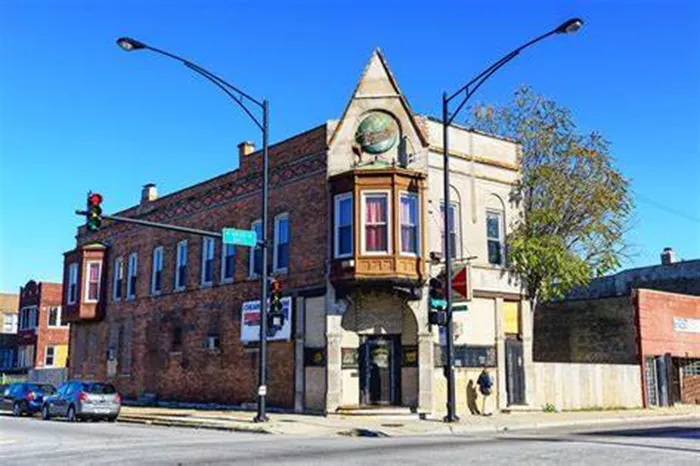Chicago, with its towering skyscrapers, vibrant lakefront, and rich cultural scene, is a city full of contrasts. Among its 77 community areas, the Englewood neighborhood stands out, with a history and character that are both unique and complex. As a traveler interested in exploring off – the – beaten – path places, I set out to discover where Englewood is and what makes it tick.
Location and Geography
Englewood is located on the South Side of Chicago. It’s bordered by several other neighborhoods, which gives it a strategic position within the city’s urban fabric. To the north, you’ll find Greater Grand Crossing; on the south, West Pullman; the west is home to West Englewood (which was once part of Englewood but is now a separate community area); and on the east lies Roseland.
Getting to Englewood is relatively straightforward if you’re familiar with Chicago’s public transportation. The Red Line of the “L” (Chicago’s elevated train system) runs through Englewood, with a stop at 63rd Street. The Green Line also has a presence in the neighborhood, branching off and stopping at Halsted and terminating at Ashland/63rd. If you’re driving, major roads like Halsted Street and 63rd Street are key thoroughfares that cut through the area. However, like many urban neighborhoods, parking can be a challenge, especially in the more commercial areas.
A Brief History
Englewood’s story is one of transformation. Originally, due to drainage projects, the area was a swampy region that became more habitable in the mid – 19th century. By the early 20th century, it had blossomed into a bustling commercial and residential area. The expansion of the railroad in the late 19th century was a major catalyst for its growth. It became a prosperous suburb, and the shopping district centered around 63rd Street and Halsted Street was the second – largest in the city at one time. A large Sears department store and many other big and small businesses thrived here, and nearly 90,000 people called Englewood home by the 1930s.
But the Great Depression hit the small businesses hard. Then, when restrictive housing covenants were lifted, an increasing number of African Americans moved into Englewood. This led to a series of events common to many South and West Side communities: white flight, redlining (a discriminatory practice where banks refused to lend in certain neighborhoods), and disinvestment. These factors caused a decline in property values, and over time, crime, gun violence, poverty, and unemployment became pressing issues that the community has been working hard to overcome.
Community and Culture
Despite its challenges, Englewood has a strong sense of community and a rich cultural tapestry. Churches play a central role in the community life. For example, the Antioch Missionary Baptist Church not only serves as a spiritual center but also provides services like affordable housing. There’s a real sense of togetherness during church events, from Sunday services to community outreach programs.
The neighborhood also has a growing number of community – driven initiatives. The Englewood Jazz Festival, held annually in Hamilton Park, is a highlight. It brings people from all over the city together to enjoy music, food, and a sense of community pride. Local businesses, though they’ve faced difficulties, are slowly making a comeback. The Kusa Nya Café, for instance, is more than just a place to get a cup of coffee. It’s a community hub where residents can gather, share stories, and take part in various events.
Notable Landmarks
Hamilton Park
Hamilton Park is one of Chicago’s oldest parks and a cornerstone of the Englewood community. It offers a range of recreational facilities, including basketball courts, tennis courts, and a large open field for various sports. The park also has a community center that hosts events throughout the year, from fitness classes to art exhibitions. In the summer, the park comes alive with people enjoying the outdoors, kids playing on the playground, and families having picnics.
Englewood Square
This modern development is a sign of hope and revitalization in Englewood. It features well – known stores like Whole Foods and Starbucks, which have not only brought in new economic activity but also provided much – needed access to fresh food and popular consumer services in an area that was previously a food desert. The presence of these businesses has also attracted other smaller, local enterprises, contributing to the neighborhood’s economic diversification.
Conclusion
In conclusion, Englewood is more than just a neighborhood on Chicago’s South Side. It’s a place with a complex past, a resilient present, and a promising future. As a traveler, I was struck by the community’s strength and the passion of its residents for making positive change. From its historical landmarks to its vibrant community – led events, Englewood offers a unique experience that goes beyond the typical tourist attractions. It serves as a reminder that every city has hidden stories and places waiting to be discovered, and that the true essence of a place often lies in its communities. Whether you’re interested in urban history, social development, or simply want to explore a different side of Chicago, Englewood is well worth a visit.

